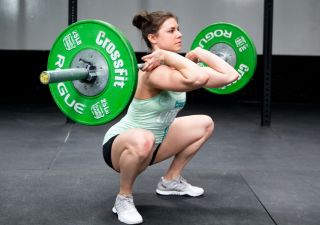Correct bracing for movement is imperative for three mutually inclusive variables; the maintenance of neutral spine, injury prevention and the maximisation of force production.
The purpose of this article is two-fold, to teach strategies for bracing, and to explain it’s physiology.
Bracing Strategy:
- Create a posterior pelvic tilt by squeezing the glutes.
- Create a depression of the ribcage (take bottom rib towards the front of the pelvis) by contraction your abdominals.
- Draw the bottom of your shoulder blades together and down (learn about Scapula Stability).
- COMPLETE ALL AND EVERY MOVEMENT IN THIS POSITION.
- Physiology of Bracing
From a physiological point of view, there are three mechanisms contributing to bracing:
- An increase in intra-abdominal pressure: By increasing the pressure within this bucket, the active and passive subsystems, the skeletal and muscular systems, are stabilised.
- An increase in trunk and hip muscle stiffness: Stiff muscles around these joints reduce movement as a result of external forces.The stiffness allows a more stable base from which to create movement.
- Compressive spinal force: Stabilising the lumbar spine.
The challenge with bracing is to recruit the stabilising muscles while not over activating these muscles which may result in injuries from the increased compressive forces. The lesson here is only to recruit these muscles as much as is needed. Basically, the aim is to activate the appropriate response for the external load, ensuring that activation is not excessive, and compressive forces on the spine are kept to a minimum.





